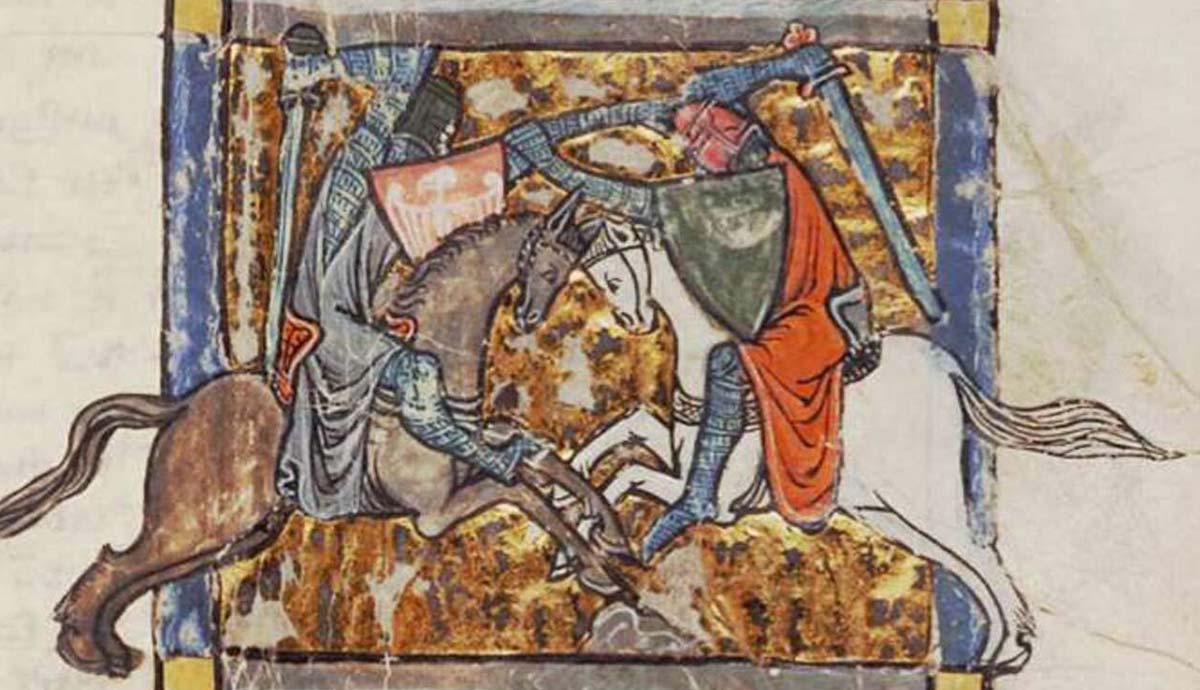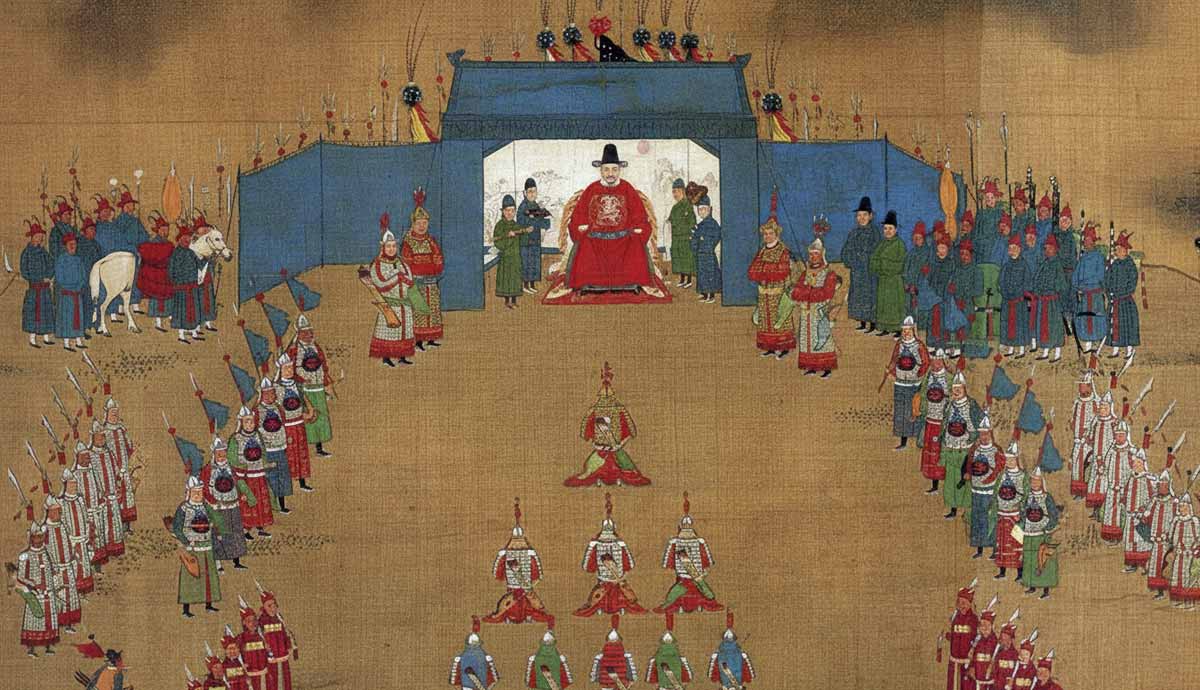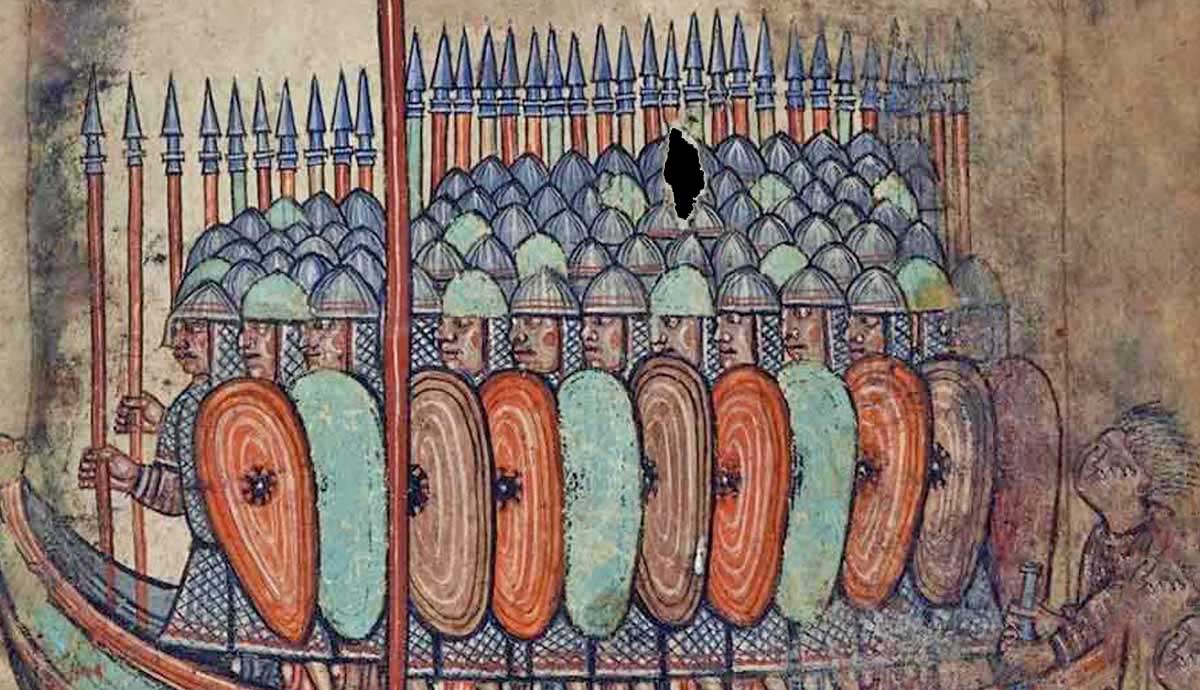
Over the course of Britain’s post-Roman era, the Anglo-Saxons progressively conquered more and more territory. This is what eventually led to the formation of England. However, not all Anglo-Saxon kings were equally successful in battle. Some were much more effective than others. King Athelfrith of Northumbria was a notable monarch who contributed significantly to the expansion of Anglo-Saxon territory in Britain. He did this through various important battles that crushed the power of many British kingdoms. What were some of the most notable battles that occurred during his reign?
How Bede Presented Athelfrith as the Conqueror of the British Kings

The English historian Bede wrote The Ecclesiastical History of the English People in about the year 731. In this important historical work, he provides a historical narrative covering the period of the Anglo-Saxon conquest of Britain up to his own time. With this in view, it is fascinating to see how he described Athelfrith:
“At this time, the brave and ambitious king, Ethelfrid, governed the kingdom of the Northumbrians, and ravaged the Britons more than all the chiefs of the English, insomuch that he might be compared to Saul of old, king of the Israelites, save only in this, that he was ignorant of Divine religion. For he conquered more territories from the Britons than any other chieftain or king, either subduing the inhabitants and making them tributary, or driving them out and planting the English in their places.”
According to Bede, Athelfrith was the most effective conqueror against the Britons who had ruled until then. What, specifically, did Athelfrith do?
The Battle of Catraeth

From the perspective of the medieval Britons, one of the most significant events involving Athelfrith was the Battle of Catraeth. This battle is known from the Y Gododdin, a poem from about the year 600, attributed to the late 6th- or early 7th-century bard Aneirin. It describes a massive battle between the Britons and the Anglo-Saxons, involving an alliance of Britons from various different kingdoms. It appears to have been a raid on the Anglo-Saxon settlement at modern-day Catterick, Yorkshire, which has been interpreted as the ‘Catraeth’ of the poem.
The enemies are explicitly named as the men of Deira and Bernicia. Together, those two kingdoms formed the kingdom of Northumbria, which Athelfrith united. The leader of the British forces is referred to as Mynyddog Mwynfawr or Mynyddog Eidyn. The latter epithet refers to Din Eidyn, which is modern-day Edinburgh. Hence, this attack force appears to have been primarily directed by the northern Britons.

Despite the evidently massive army that was organized by the Britons, they were almost all killed by the Anglo-Saxons of Northumbria. For this reason, the Battle of Catraeth was remembered by the medieval Britons as a great tragedy. The poem Y Gododdin does not specifically mention Athelfrith of Northumbria at this battle. However, he logically must have been the king involved on the side of the Anglo-Saxons. The battle took place in his territory, and the poem specifically mentions the two kingdoms making up Northumbria. Furthermore, Athelfrith became king in c. 593.
We can be sure that the Battle of Catraeth did not take place before that year. It would appear that the powerful king known as Urien Rheged died in about that year. He had such prominence in that region that he would surely have been mentioned in Y Gododdin if he had still been ruling when the battle occurred. For this reason and others, most scholars date the Battle of Catraeth to c. 600, which fits perfectly within the reign of Athelfrith.
The Battle of Degsastan

In Bede’s overview of Athelfrith’s reign, which was partially quoted above, he highlights one particular battle as being especially noteworthy. This was the Battle of Degsastan. What do we know about it? Bede tells us that at this battle, Aedan, the king of the Scots, came up against Athelfrith. From many other records, we know that Aedan was the king of Dal Riada. This was an Irish kingdom in western Scotland. The Irish themselves were the Scots, which is why Bede refers to Aedan as the king of the Scots.
Bede tells us the following:
“Aedan, king of the Scots that dwell in Britain, being alarmed by his success, came against him with a great and mighty army, but was defeated and fled with a few followers.”
In other words, this was a massive battle that resulted in defeat for Aedan and his “great and mighty army.” In this respect, it is very similar to the Battle of Catraeth.

Bede goes on to tell us that Athelfrith ended this war in 603. This has often been taken to mean that the Battle of Degsastan itself occurred in 603, but this is not what Bede actually says. It could well be that the Battle of Degsastan occurred several years before the conclusion of the war as a whole.
In any case, the fact that this is the one battle that Bede makes a point of mentioning in his overview of Athelfrith’s reign shows that it must have been exceptionally important. From this alone, we can reasonably conclude that it must have been a major battle with significant political consequences. Bede’s reference to Aedan’s “great and mighty army” partially confirms this. Furthermore, Bede provides us with at least part of the reason why this battle was so significant. He tells us the following:
“From that time, no king of the Scots durst come into Britain to make war on the English to this day.”
While Aedan was not a king of the Britons, there is reason to believe that the Britons were allied with him in this endeavor. For instance, in multiple medieval British manuscripts, Aedan is presented as an ally of several British kings of the north.
The Battle of Chester

Later in Athelfrith’s reign, another major battle occurred against the Britons. This occurred further south than the Battle of Catraeth and the Battle of Degsastan, which may, in fact, have been the same event. This was the Battle of Chester. Chester was an important city near the present-day border of England and Wales. It was known in medieval times as the City of the Legion, in reference to the fact that it was one of the permanent legionary bases in Britain during the Roman era. This was a location of strategic importance, and like the Battle of Catraeth, the medieval Britons remembered it as a tragedy.
The Battle of Chester is mentioned in both the Annales Cambriae and the Anglo-Saxon Chronicle. The former is a 10th-century chronicle written by the Britons, while the latter is a chronicle from about the same time written by the English. To the Britons, it was a tragedy, while the Anglo-Saxons remembered it as a glorious victory.

In fact, this battle was so notable that it was also recorded in the Irish Annals. What happened during this remarkable event? According to Bede’s account, Athelfrith took his forces to this area to do battle against the Britons. They came across an enormous group of monks at the monastery of Bangor-on-Dee, praying for the success of the British army. Seeing as they were unarmed, Athelfrith ordered these monks to be slain first. This massive slaughter of almost all the monks there, over 1,000 of them, is part of the reason why this was such a shocking tragedy to the Britons.
The Annales Cambriae dates the battle to 613, although most scholars today accept 616 as the most likely date. This chronicle states that Selim, son of Cinan, fell in the Battle of Chester. He is obviously identifiable as Selyf ap Cynan of the dynasty of Powys, which was the territory in which Chester was located. Hence, Athelfrith defeated the king of this powerful British kingdom.
How Athelfrith of Northumbria Conquered Britain

In conclusion, we can see that Athelfrith enlarged the territory of the Anglo-Saxons through conquest against the Britons. It was for this reason that Bede described him as defeating the Britons more than any other Anglo-Saxon king. One major defeat of the Britons was at the Battle of Catraeth. This occurred in c. 600, and it involved a massive army of Britons, mainly from the north of Athelfrith’s kingdom, invading his territory. It appears that they were trying to reclaim Catterick, which had formerly been in the territory of Urien Rheged. This ended in a crushing defeat of the Britons. The same occurred when Aedan of Dal Riada came against him at the Battle of Degsastan at about the same time as the Battle of Catraeth, once again with a massive army from the north. British kings were almost certainly allied with Aedan during this event. Finally, we have seen that Athelfrith inflicted a crushing defeat against the Britons at the Battle of Chester in about 616, in which the British king of Powys was killed.








